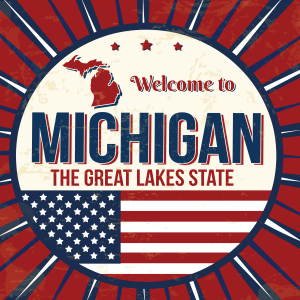
Dan Sherman
Client Advisor
Product Development

Sean Gray
Client Advisor
Production Manager
The rules for political yard signs in Michigan can vary by municipality, but there are some general guidelines and state-level regulations that typically apply:
- Placement:
- Signs should not be placed on public property or within the public right-of-way, which usually includes the area between the sidewalk and the curb.
- Signs should not obstruct traffic signs, signals, or drivers’ lines of sight.
- Timing:
- Many municipalities allow political signs to be placed a certain number of days before an election and must be removed within a specific period after the election. For example, signs might be allowed 30 days before an election and must be removed within 10 days after.
- Size:
- The size of political signs is often regulated to ensure they are not too large. Common restrictions might limit signs to a certain number of square feet.
- Content:
- Political signs must include a disclaimer stating who paid for the sign. This is typically required for transparency and accountability.
- Private Property:
- Political signs are generally allowed on private property with the property owner’s permission.
- Homeowners’ associations (HOAs) may have their own rules regarding the placement and size of political signs.
- State and Local Regulations:
- Always check with local city or township offices for specific regulations that apply to your area, as rules can vary widely.
- Highways and Roads:
- Political signs are prohibited on state highways and within the rights-of-way of state-maintained roads.
To get precise and up-to-date information, it is best to contact your local city or township office, or check their official website. Additionally, the Michigan Secretary of State’s office can provide guidance on statewide regulations regarding political signage. For more detailed information – See Michigan Department Of Transportation
Do you need signs for your campaign? Let me know SeanGray@sbf-phcs.com
4o
Do you need a marketing partner?
Let's Talk
Contact us today to get started on your next project or get your questions answered. You can also request quotes here.
Celebrating
50 Years
of service
507 Mills Street Ste A
Kalamazoo, MI 49001

Dan Sherman
Client Advisor
Product Development

Sean Gray
Client Advisor
Production Manager

